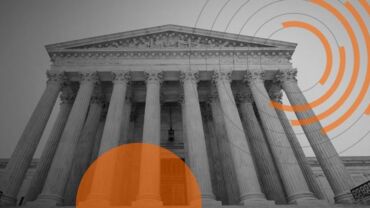From an aspiring veterinarian to an appellate court judge in Arizona, Samuel A. Thumma sees the promise in the use of AI in the judiciary
The post is part of a limited series of blog posts and podcasts presented by the Thomson Reuters Institute, Revolutionizing Rights: AI and the Future of Legal Equality, that will provide perspectives on the use of AI in the legal sphere
It is often assumed that judges have always been solely dedicated to the law and harbored judicial ambitions from the start. However, Judge Samuel A. Thumma initially pursued a career in veterinary medicine when he began college.
Early in his academic journey, however, a re-evaluation of his strengths redirected him into the field of law. After a degree in agricultural journalism from Iowa State University, he then earned a JD from the University of Iowa College of Law and an MJS from Duke University School of Law. He spent more than 15 years in private practice before becoming a judge, serving as a trial judge for five years and an appellate judge for more than a dozen years.
Now, Judge Thumma is deeply committed to the legal community and its advancement and serves the American Bar Association (ABA) as a Presidential appointee to the Advisory Council of the ABA’s Task Force on Law & Artificial Intelligence as well as the Standing Committee on Lawyer Referral & Information Services.
Judge Thumma approaches his judicial duties with profound seriousness, grounded in his commitment to public service. “To me, the essential thing is that we remember that we, the judges, courts, and everyone working for the courts, are public servants,” he says. “If we forget that, we lose our identity and purpose.” And he doesn’t settle for merely maintaining the status quo or for following traditional paths; instead, he stands out as an innovator and leader within the legal field. Indeed, this innovative nature led him to consider the importance of technology in the courts.
In discussing AI, Judge Thumma distinctly separates general AI, such as spell check systems, from generative AI (GenAI), like the publicly available tool ChatGPT. There is no question that if someone needs help spelling, they will use spell check in a formal setting. Using GenAI is a more complex question and comes with its own criticisms and caveats. In addition to what AI-driven tools can be used appropriately, the question then becomes should they be used, and then, how can those involved fulfill their ethical duty while doing so.
Comprehending GenAI’s impact
After using AI for many years in general work, there was a huge change in the landscape when Chat GPT was released. The sheer magnitude and force of change that was brought by the potential use of GenAI tools, caused Judge Thumma to focus on comprehending this new technology, as it would inevitably come before him. As a judge, he explained that understanding the new technology and preparing for its use is always the most prudent course of action.
While beginning to understand how aspects of GenAI might appear in cases before the court, it also became clear that other aspect of AI-related programming might be useful for the court in expanding access to justice.
This realization put an emphasis on exploring AI-driven tools and applications within the judicial system. In many cases, GenAI can expedite the service of justice, which is critical, because often justice delayed is justice denied.

As innovation advances, Judge Thumma says that beyond simply assessing efficiency, we must also remain cognizant of other changes. “AI and GenAI will heighten focus on the digital divide,” he says. “This will further advocate for initiatives like universal Wi-Fi and access to computer systems.”
Indeed, it’s essential to acknowledge the needs of those seeking these services. After all, what use is an easy-to-complete form or a more-accessible virtual hearing if individuals cannot access those innovations due to insufficient internet or lack of smartphones? “The courts appear to benefit inadvertently from efforts to reduce the digital divide. Measures like establishing universal access to high-speed internet can facilitate communication between self-represented litigants and the court. These initiatives not only bridge the digital divide but also close the gap created by geography.”
Weighing the good and the bad
The influence of technology on the judicial system goes beyond just performing simple research or creating basic documents. When considering future court rulings, Judge Thumma says he anticipates that extensive datasets will more likely be leveraged to swiftly set standards for precedents, allowing similar or almost identical cases to be resolved quickly. This vision is analogous to Amazon’s application of AI in handling minor customer service concerns before involving a human representative.
While by no means does this advocate on not having judge, it does advocate for resolving minor issues — like scheduling conferences and discovery disputes — expeditiously, as they don’t usually require extended judicial intervention. In essence, this process keeps a human in the loop while making sure cases can progress.
As we look deeper into what GenAI can provide, it becomes important to weigh the good and the bad, Judge Thumma notes. “I am both excited for and leery of how we can identify what data to keep, how to better use data, how to better schedule and structure things within the court,” he says. “I want to make the court system simpler and easier for individuals who are not represented by lawyers. We need to see how we can put things in place that help people both in court and to avoid the court system altogether, when possible.”
At the heart of both the excitement and concerns, there are large quantities of data — and clearly, the development of GenAI for use in courts will necessitate the implementation of safeguards to protect personal information and prevent misuse.
Further, it’s critical that courts and government aid agencies not be allowed to fall behind on technology, Judge Thumma says, acknowledging the current financial aspects to this lag and noting some of the significant upfront costs that need to be considered before any GenAI program can be implemented. Yet, there are benefits that justify these upfront costs. And a failure to pursue these advanced technologies will hinder the ability of courts and judges to provide justice, and access to justice, to those most in need. Indeed, it is important that courts consistently observe GenAI’s ability to enhance their own capabilities and remain committed to pursuing that objective.
You can hear more insights from Judge Samuel A. Thumma on a special edition of the Thomson Reuters Institute Insight podcast, on Spotify.







